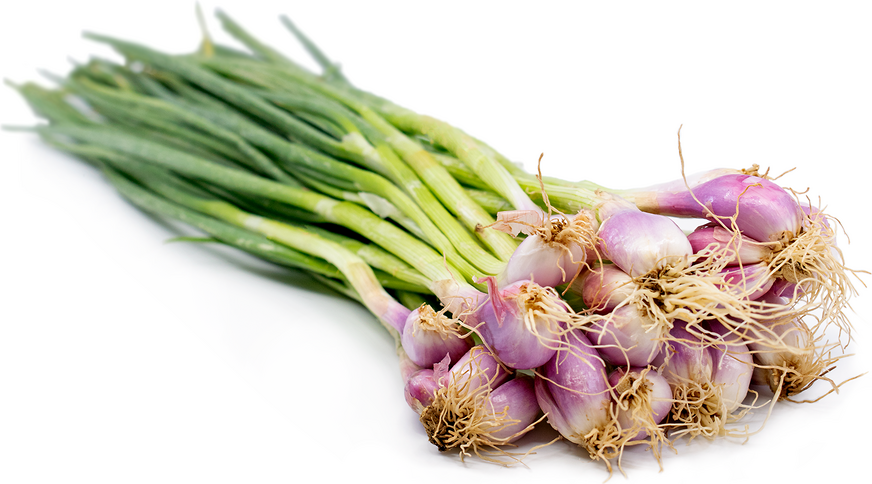


Thai Shallots
Estimated Inventory, bunch : 0
Description/Taste
Thai Shallots are small in size and are oblong in shape with a rounded center tapering to pointed, slightly curved ends. The bulbs are encased in dry, papery, thin bright red skin that easily flakes when touched. Inside the skin, there are clusters of 2-3 cloves of individually wrapped segments similar to garlic, and the firm, dense, and juicy cloves are pale white, almost translucent, with red-purple rings. Thai Shallots are aromatic, pungent, sweet, and crisp when raw and when cooked, they develop a sweet, savory flavor with notes similar to garlic.
Seasons/Availability
Thai Shallots are available in the fall through winter.
Current Facts
Thai Shallots, botanically classified as Allium cepa, are a smaller shallot variety that are members of the Amaryllidaceae family. Also known as Hom Dang which translates to red onion in Thai, Thai Shallots are smaller in size than European and Western varieties and are often used to add a mild flavor to culinary dishes. In Asia, Thai Shallots are the preferred onion to use over common onions for their softer taste and are popularly used fresh and cooked in Indonesian, Malaysian, Cambodian, Lao, Persian, Indian cuisine.
Nutritional Value
Thai Shallots contain potassium, fiber, iron, calcium, and vitamin C.
Applications
Thai Shallots are best suited for both raw and cooked applications such as smoking, roasting, sautéing, and grilling. When raw, they can be chopped and mixed into salads or minced into chile pastes, gravies, and relishes. When cooked, Thai Shallots can be sprinkled into soups such as tom kha, fried and crumbled overcooked vegetables, or roasted for a smoky flavor. They can also be cooked in satay chicken, massaman curry, pad Thai, Hainanese chicken and rice, and fried rice. Thai Shallots pair well with green tomatoes, peppers, bell peppers, mushrooms, green beans, garlic, capers, baked oysters, Parmesan cheese, beer, and meats such as poultry, beef, pork, and seafood. The bulbs will keep up to one month when stored in a cool and dry place. Fried slices of Thai Shallots will keep up to three months when stored in a sealed container at room temperature.
Ethnic/Cultural Info
In Thailand, Thai Shallots are popularly prepared roasted, fresh, and fried. When roasted, the shallots are cooked in a charcoal brazier to obtain a deep, smoky flavor. They are also minced and mixed into chili pastes to use as a condiment and mixed into curry sauce for added flavor. Known as Khai jiaw, Thai Shallots are used in an on-the-go omelet in Asia that is commonly consumed as a snack or lunch item served with rice and sriracha. Thai Shallots are also used medicinally in Asia to help protect the immune system and aid in digestion.
Geography/History
Shallots are native to Asia and are believed to have been introduced to Europe from trade routes and crusaders returning from the middle east in the 11th century. Today Thai Shallots are somewhat rare in comparison to their European and Western counterparts and are available at farmer markets and specialty grocers in Asia, North America, Europe, and Australia.




